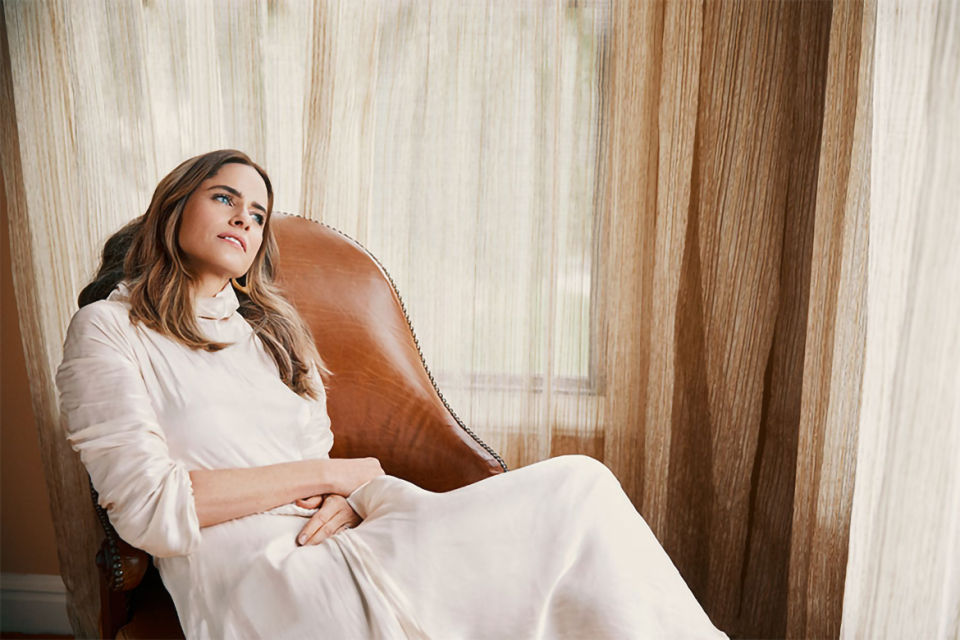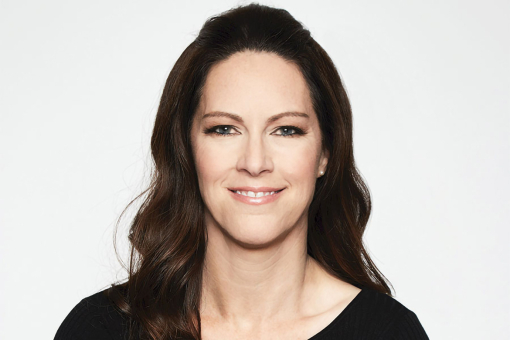Amid the roiling gloom of 2020, a few bright spots shine.
One of the most welcome is Amanda Peet toplining the second season of USA's Dirty John anthology series: The Betty Broderick Story. It's a richly textured role — redolent of total immersion and interior mysteries — and one that demonstrates her rightful status in the industry.
Well into her third decade in show biz, Peet comes to Broderick on the heels of a dazzling five-year hot streak: two seasons in the Duplass Brothers' HBO family drama Togetherness as Tina Morris, an aimless, id-driven wild card who epitomizes the term hot mess; a devastating turn as Olivia Wells, a New York wife and mother facing middle age in Matt Weiner's The Romanoffs on Amazon Prime; and her third and final season as Jules James, the canny, would-be soulmate of Hank Azaria's titular trainwreck in IFC's Brockmire.
Broderick's is the rare story that deserves to be called sensational, having earned a place in both true-crime and feminist-theory annals.
Dan Broderick and Betty Bisceglia married in 1969, Betty serving as wife, mother (to their five kids) and breadwinner, helping to put Dan through law school, after which he became a superstar attorney. Then Dan strayed with his young assistant, eventually leaving Betty for her.
Sometime after their acrimonious divorce, Betty snapped. She was served restraining orders, endured multiple stints in jail and was briefly committed to a mental hospital.
Finally, in 1989, she made her way into Dan's home and pumped three bullets into him and his wife while they lay in bed. Betty was convicted in 1991 of second-degree murder and sentenced to 32 years in prison, where she remains to this day.
Was Betty a deranged, cold-blooded killer or, as her trial attorney said at the time, "the victim of a covert, methodical and discreet assault" by her husband, who used his legal skills and influence against her?Those, roughly speaking, are the parameters of the ongoing debate about Betty Broderick.
"It's an incredibly tragic story," Peet says. "I don't know to what extent she had mental illness early on, but I think obviously she became mentally ill."
Of bringing Betty's story to life, she says, "It was definitely one of the hardest things I've ever done. She's a very raw human being at the end, really out of control, and I prefer to be in control, as most people do."
For Dirty John showrunner Alexandra Cunningham (whose credits include, aptly enough, Bates Motel and Desperate Housewives), the chicken-and-egg question of Betty's derangement held rich dramatic possibilities.
"At Betty's trial, the ADA [assistant district attorney] said it doesn't matter why she did it, only that she did it," she says.
"And yes, that is true from a law enforcement and courtroom standpoint, but from a writing standpoint, and living in a world where there's a lot of gun violence committed because people feel like they've lost their identity and become invisible, the why was definitely a thing that I wanted to explore."
One thing's for sure: it's the role of a lifetime for the right actress — big and splashy, with a character arc that's by turns heartbreaking, horrific and complicated, while implicitly asking a number of Big Questions.
During casting, Cunningham says, "I was thinking, 'Who's the actress with the deepest wheelhouse, who is going to really surprise people with her abilities?'"
Cunningham had been keeping an eye on Peet. "I remember watching Brockmire and thinking, 'If she can do this, she can do anything!' and the Romanoffs episode just confirmed it for me."
She continues, "I kept waiting for her Escape at Dannemora to be announced, [suspecting] that someone else had seen this and was way ahead of me. I almost couldn't believe that she was available." (Her Dannemora reference evokes the power and range Patricia Arquette brought to that Showtime miniseries.)
Once the cameras were rolling on the UCP–produced series, the result was "kind of terrifying," Cunningham says.
"The access that she had to the emotions of the character — I still don't know how she did it. And though I hate the word pathos, because it always sounds patronizing, she can make you laugh and cry in the same scene, and it never feels forced — it always feels legitimate."
That legitimacy comes, at least in part, from a dues-paying career that began back in the mid-'90s. A New York native, Peet was majoring in history at Columbia University when she took a flyer on an acting class at Gotham's HB Studios.
She soon found herself studying under the legendary Uta Hagen, whose former students include Jason Robards, Al Pacino, Jack Lemmon and Sigourney Weaver.
Peet's was, by her own admission, a "privileged" upbringing that included a stint in a London prep school as a preteen.
Hailing from a family of capital-P professionals — dad is a corporate lawyer, mom's a psychologist and her sister's a doctor — she felt like a "black sheep" for choosing a career in the arts.
"My parents weren't overly excited about me becoming an actress," she recalls. "I think I just wasn't very good at anything else. I'm pretty sure I had ADD and didn't know it, so there was no way I was going to sit at any kind of desk in an office all day long."
Anyway, she adds, "The feast-or-famine nature of the acting world fit me."
Peet didn't go hungry for long. She studied with Hagen for nearly five years, during which she started racking up on-screen credits, including a guest spot on Law & Order, six episodes of Darren Star's ill-fated soaper C.P.W. and the 1997 Seinfeld episode "Summer of George."
In 1999, she headed west to play the female lead in The WB sitcom Jack & Jill. It aired for two seasons, but neither the series nor Peet made much of an impact.
Instead, it was a movie role (shot after the J&J pilot, but before the series went to air) that truly announced her career.
As an aspiring hitwoman in the 2000 action comedy The Whole Nine Yards, Peet managed to bring the freshness of an ingénue and the brass of a seasoned player.
Though her show-biz debut was already years behind her, the film marked her arrival. "That changed everything," she says, "because I actually got to be funny; it wasn't just a dud girlfriend role. There were 20 women reading with Bruce Willis, and he picked me out of nowhere.
"There was nothing on my résumé that would have pointed to me getting that."
Sarah Paulson, who became fast friends with Peet on the Jack & Jill set and remains so, reflects, "To be in a movie with Bruce Willis, and Matthew Perry at the height of his Friends fame, and for her to come in there and kind of steal the movie…" she hesitates as if still gobsmacked by her pal's performance. "Amanda was so startling in it, partly because of her ability to hold her own — she seemed like she belonged in that company, not the odd man out."
In retrospect, Peet's performing presence gelled in that movie: lanky, with grey-blue eyes, fierce cheekbones and luminous white teeth, she's gorgeous with a hint of androgyny. She's less the untouchable homecoming queen, more the cool older sister who can hang with — and stand up to — the guys.
No wonder Aaron Sorkin brought her aboard for his 2006 NBC dramedy Studio 60 on the Sunset Strip; she's damn near the platonic ideal of the truth- telling, wise-cracking Sorkin femme. ...
For the rest of the story, pick up a copy of emmy magazine HERE
This article originally appeared in emmy magazine, Issue No. 6, 2020











